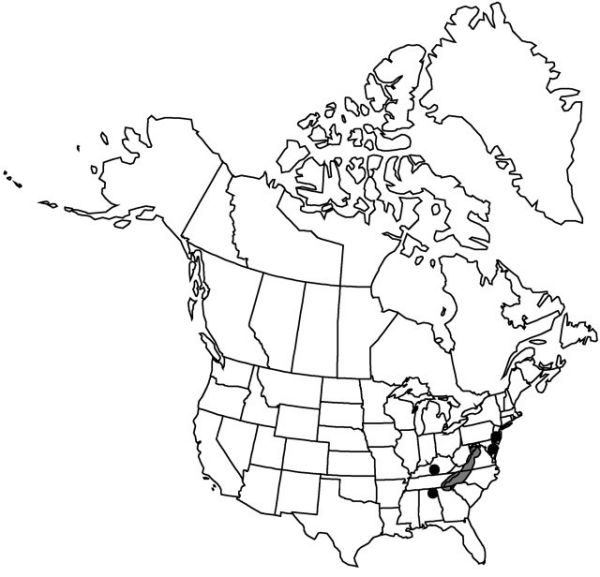Difference between revisions of "Xerophyllum asphodeloides"
Gen. N. Amer. Pl. 1: 235. 1818.
Common names: Turkey-beard mountain-asphodel
Basionym: Helonias asphodeloides Linnaeus
FNA>Volume Importer |
FNA>Volume Importer |
||
| Line 27: | Line 27: | ||
|elevation=0–1400 m | |elevation=0–1400 m | ||
|distribution=Ala.;Del.;Ga.;Ky.;Md.;N.J.;N.C.;S.C.;Tenn.;Va.;W.Va. | |distribution=Ala.;Del.;Ga.;Ky.;Md.;N.J.;N.C.;S.C.;Tenn.;Va.;W.Va. | ||
| − | |discussion=<p>Xerophyllum asphodeloides is disjunct from the xeric oak-hickory forests of the southern Blue Ridge Mountains to the dry sandy soils of the pine barrens of New Jersey (L. Artz 1951; W. B. Zomlefer 1997b). Xerophia, a unique alkaloid, has been reported from this species (W. Procter 1839).</p> | + | |discussion=<p><i>Xerophyllum asphodeloides</i> is disjunct from the xeric oak-hickory forests of the southern Blue Ridge Mountains to the dry sandy soils of the pine barrens of New Jersey (L. Artz 1951; W. B. Zomlefer 1997b). Xerophia, a unique alkaloid, has been reported from this species (W. Procter 1839).</p> |
|tables= | |tables= | ||
|references= | |references= | ||
| Line 51: | Line 51: | ||
|publication year=1818 | |publication year=1818 | ||
|special status= | |special status= | ||
| − | |source xml=https://jpend@bitbucket.org/aafc-mbb/fna-data-curation.git/src/ | + | |source xml=https://jpend@bitbucket.org/aafc-mbb/fna-data-curation.git/src/8f726806613d60c220dc4493de13607dd3150896/coarse_grained_fna_xml/V26/V26_52.xml |
|genus=Xerophyllum | |genus=Xerophyllum | ||
|species=Xerophyllum asphodeloides | |species=Xerophyllum asphodeloides | ||
Revision as of 16:45, 18 September 2019
Stems (0.5–)0.8–1(–1.5) m. Leaf blade 3–5 dm × 1–2.5 mm. Racemes 1.5–3 dm. Tepals oblong to ovate, 5–8 × 2–3 mm; styles 1.5–2 mm. Capsules 4–5.5 mm. Seeds 2 per locule. 2n = 30.
Phenology: Flowering spring–early summer.
Habitat: Pine barrens and dry mountain woods
Elevation: 0–1400 m
Distribution

Ala., Del., Ga., Ky., Md., N.J., N.C., S.C., Tenn., Va., W.Va.
Discussion
Xerophyllum asphodeloides is disjunct from the xeric oak-hickory forests of the southern Blue Ridge Mountains to the dry sandy soils of the pine barrens of New Jersey (L. Artz 1951; W. B. Zomlefer 1997b). Xerophia, a unique alkaloid, has been reported from this species (W. Procter 1839).
Selected References
None.
Lower Taxa
None.